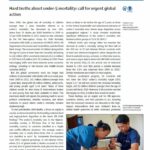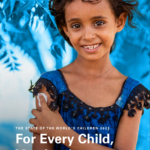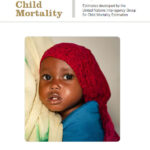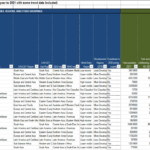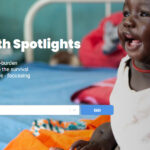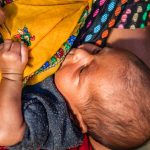It is crucial to use tested and standardized indicators for tracking and monitoring trends in neonatal health over time and making comparisons between districts, countries, or regions.
Using standard measurements should ensure collection of data that can be meaningfully analyzed and employed to inform program and policy decisions.
10
number of identified priority Every Newborn indicators
17
number of Sustainable Development Goals
All data on this page represents the most recent data available, unless otherwise noted. Please visit our Newborn Numbers page and download the Excel spreadsheet to explore the data further.
More information
Several global bodies have developed recommended indicators for global tracking and use at country level. The Every Newborn Action Plan (ENAP) has proposed a list of 10 core indicators and 10 additional indicators of impact and coverage of evidence-based newborn interventions. The World Health Organization (WHO) is compiling a list of core indicators aligned with the UN’s Global Strategy for Women’s, Children’s, and Adolescents’ Health. This list has been informed by efforts to standardize indicators for the Sustainable Development Goals (SDGs), Ending Preventable Maternal Mortality (EPMM), ENAP, and the WHO’s Global Reference List of 100 Core Health Indicators.
Efforts are also underway to develop standardized indicators for monitoring the implementation strength and coverage of priority newborn health interventions:
- Kangaroo mother care (KMC): The KMC Acceleration Partnership developed a measurement framework and 10 core indicators covering service readiness and service delivery.
- Treatment of neonatal infections: Following the recent release of new WHO guidelines on managing possible severe bacterial infections in young infants when referral is not possible, WHO and implementing partners in early-adopter countries are currently working on a measurement framework with indicators. More information will be available soon.
- Chlorhexidine for umbilical cord care: The global Chlorhexidine Working Group recommended indicators for inclusion in Demographic and Health Surveys (see information below on the new DHS optional newborn module) and is tracking indicators collected across countries.
Below are descriptions and links to useful data collection tools, which include questions on newborn care. More information on mortality audits can be found on this page.
Household surveys
Demographic and Health Surveys (DHS)
USAID-supported Demographic and Health Surveys (DHS) are nationally-representative household surveys that provide data for a wide range of monitoring and impact evaluation indicators in the areas of population, health, and nutrition. The DHS Phase 7 model women’s questionnaire now includes questions on pre- and post-discharge contacts for newborns, the content of postnatal care for newborns, and newborn care practices. In addition, an optional newborn module is under development with additional questions on newborn care practices.
Multiple Indicator Cluster Surveys (MICS)
UNICEF-supported Multiple Indicator Cluster Surveys (MICS) are nationally-representative household surveys that provide estimates of a range of indicators in the areas of health, education, child protection, and HIV/AIDS. The MICS questionnaire now includes questions on the pre- and post-discharge postnatal contacts for mothers and newborns.
Knowledge Practices and Coverage Survey (KPC)
The Knowledge Practices and Coverage Survey (KPC) is a small population-based survey originally developed by Johns Hopkins University and used by grantees of USAID’s Child Survival and Health Grants Program (CSHGP) since 1991. The KPC tool was revised to collect more data on newborn care practices.
Health facility assessment tools
Service Availability and Readiness Assessment (SARA)
The WHO-supported SARA is a health facility assessment tool designed to assess and monitor the service availability and readiness of the health sector and to generate evidence to support the planning and managing of a health system. It includes a section on service availability for maternal and newborn health.
Maternal and Newborn Quality of Care Surveys
These health facility surveys, developed by the Maternal and Child Health Integrated Program (MCHIP), focus on the frequency and quality of interventions that address the direct causes of maternal and newborn deaths and can be key sources of information for policymakers and other stakeholders in country.
Service Provision Assessment (SPA)
The USAID-supported SPA is a health facility assessment tool that provides a comprehensive overview of a country’s health service delivery. It includes a section on delivery and newborn care in the inventory questionnaire, as well as additional questions related to services for newborns.
Emergency Obstetric and Neonatal Care Needs Assessment
Created by Averting Maternal Death and Disability (AMDD) at Columbia University, the
Emergency Obstetric and Neonatal Care (EmONC) Needs Assessment is a health facility assessment tool that provides detailed data for planning to address gaps or problems in EmONC services. The tool is currently being revised to include more information on newborn services and quality of care.
Other tools
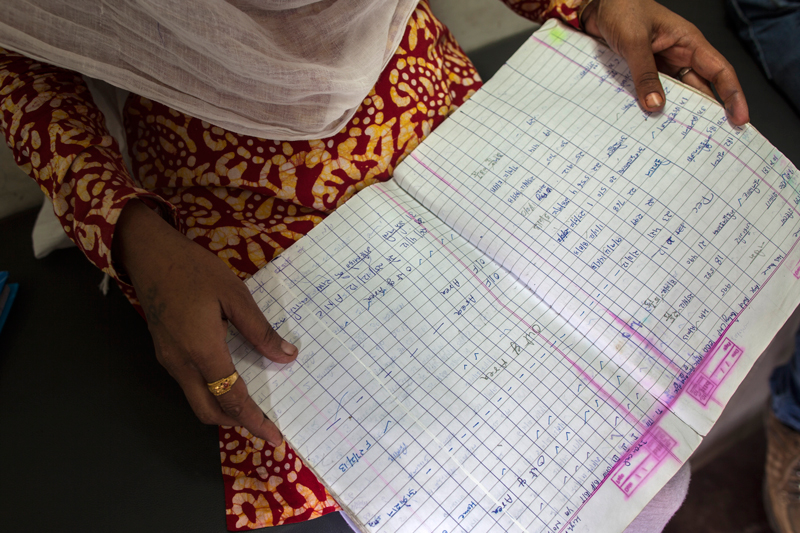
Guide to Qualitative Research to Improve Newborn Care Practices
Save the Children’s Guide to Qualitative Research to Improve Newborn Care Practices provides a reference tool for conducting qualitative (or formative) research and planning a behavior change communications strategy to improve newborn care practices.
ENAP Tools
ENAP has also compiled an overview of tools that can be used to sharpen existing reproductive, maternal, newborn, and child health (RMNCH) policies and plans, incorporating available evidence and data.
Key resources
- Every Newborn Metrics Data Cards
- Every Newborn Tool Kit
- New Signal Functions to Measure the Ability of Health Facilities to Provide Routine and Emergency Newborn Care
- Measuring Coverage in Maternal, Newborn, and Child Health
- Count every newborn; a measurement improvement roadmap for coverage data
- Global Reference List of 100 Core Health Indicators, 2015
- Sustainable Development Goal indicators
- Global Strategy for Women’s, Children’s and Adolescent’s Health 2016-2030
